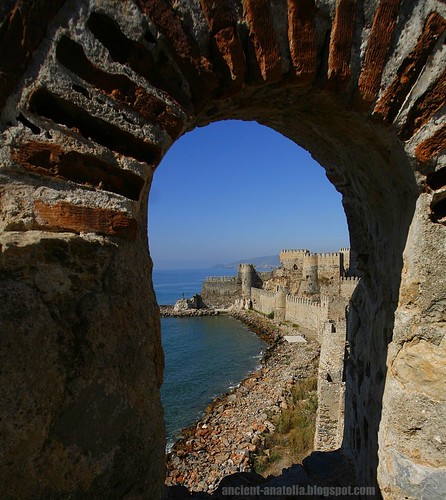Mamure, the old Crusader castle, well-preserved, about 7 km (4 mi) south east of Anamur, Turkey. Originally built by the Romans in the third or fourth century AD, it was enlarged by the Byzantine Empire and the Crusaders. After the Seljuk Turkish Sultan Aladdin Kayqubad captured the castle in 1221, he had it rebuilt in its present form. It consists of three courtyards with 39 towers, surrounded by a moat. In one courtyard there is an ancient mosque with a minaret – built by Mehmet Bey of Karamanogullari (Karamanlis) in 1300-1308 – which is still open for prayer. There are the ruins of a bathhouse on the opposite side. The castle is in two sections with two lines of ramparts between them, a walkway along the ramparts links the two sides.
Mamure, the old Crusader castle, well-preserved, about 7 km (4 mi) south east of Anamur, Turkey. Originally built by the Romans in the third or fourth century AD, it was enlarged by the Byzantine Empire and the Crusaders. After the Seljuk Turkish Sultan Aladdin Kayqubad captured the castle in 1221, he had it rebuilt in its present form. It consists of three courtyards with 39 towers, surrounded by a moat. In one courtyard there is an ancient mosque with a minaret – built by Mehmet Bey of Karamanogullari (Karamanlis) in 1300-1308 – which is still open for prayer. There are the ruins of a bathhouse on the opposite side. The castle is in two sections with two lines of ramparts between them, a walkway along the ramparts links the two sides.
